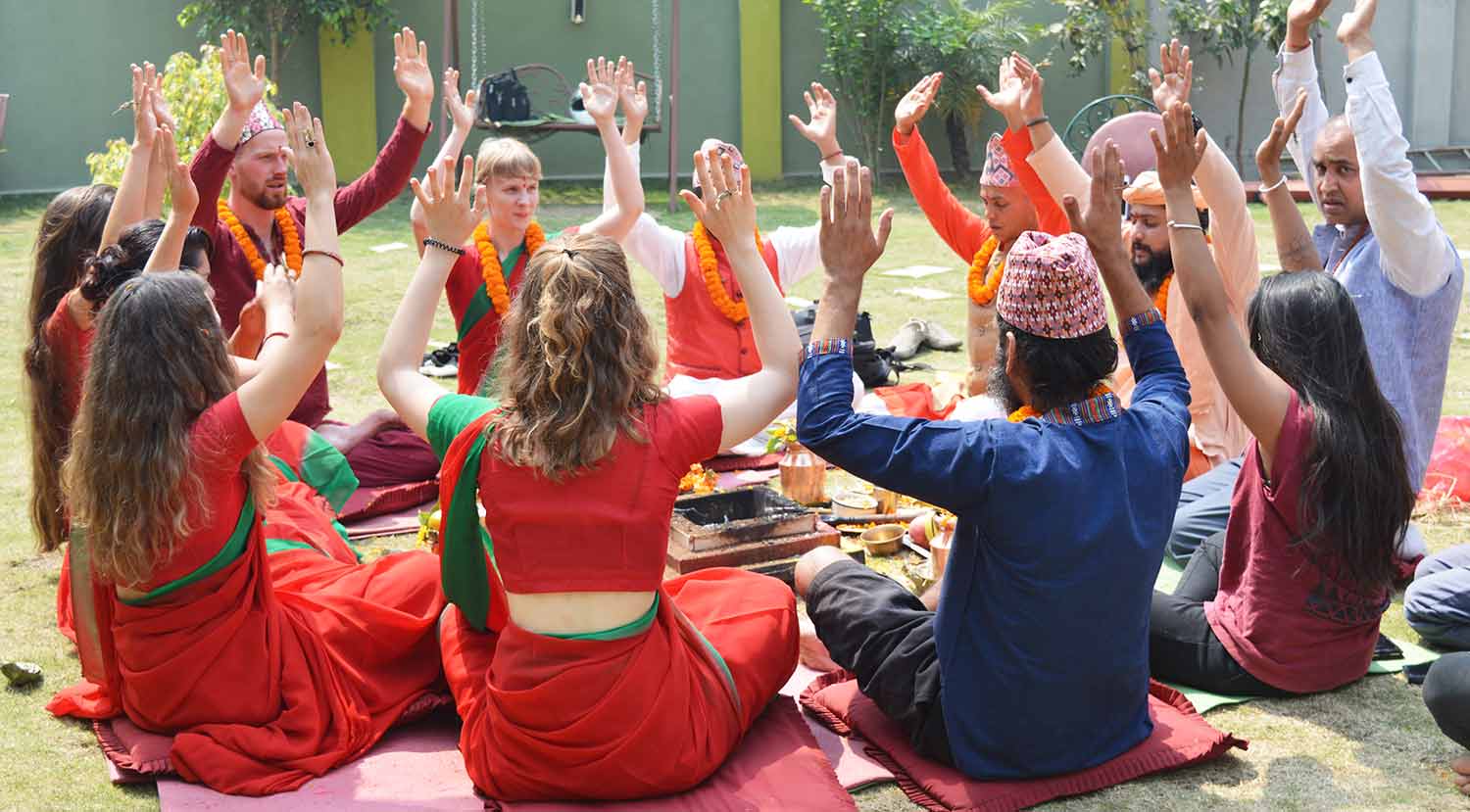
31 Mar 2021 HYN Himalayan Yoga Academy
YOGA DARSHANA, YOGA AND HUMAN LIFE
Yoga as Spiritual Discipline
Yoga is a popular topic today. In ancient times, to become omnipotent, wise, and Buddha, to be disciplined and moral, to develop spiritual consciousness, to achieve victory, the use of yogic organs such as mantras, kriyas, asanas, pranayama, mudra, meditation, etc. was used as a spiritual practice. There were various ways of chanting and penance. It was a regular education system. It was a way of life. There was a culture of life.
Transferring human culture to future generations from this way of life and education, yogis, sages and Maharishis published invaluable texts such as Vedas, Upavedas, Upanishads, Mahabharata, Ramayana, Purana, Smriti, Bhagavad Gita, Ashtavakra Gita, Shatdarshan, Yoga Darshana, Ayurveda, Samhita, etc. These texts in themselves were invaluable compound gifts from those great yogis. Based on the rules and consciousness of this scripture, human life came into existence by moving. It is said in the Vedas that “Yasmadrute na siddhyati yajno vipaschitcharan. Sadhinam Yogaminvati”. Without yoga, no sacrifice of any scholar is perfect. Yoga is the liberating state of mind restraint. The introverted emptiness of the introverted instinct is yoga.
Clips of History
The history of yoga is tens of thousands of years. Shiva was the Adiyogi and Adiguru. Around Gosainkunda in Nepal, Shiva taught Parvati the fourfold yoga Hatha, Mantra, Laya and Raja Yoga. Tantra Yoga and Kundalini Yoga are believed to be the beginning of Shiva Parvati’s interaction. About five thousand years ago, the Rig Veda was the first major reference text for yoga. Veda Vyas divided the Vedas into four types and four of the disciples who taught the main Veda in Tanahu were Pail, Vaisampayan, Jamini and Sumantu.
The Rig Veda is a Veda read by a sage from the Vedas and considered the first Veda. The Veda is the Sama Veda read by the sage Jamini from Vedavyasa. Veda recited by the Vaisampayan sage from Vedavyasa is Yajurveda. The Veda recited by Sumantu sage from Vedavyasa is Atharvaveda. Maharshi Vedavyasa’s disciple Marishi Jamini wrote Mimamsa Darshan in the Tanahu district of Nepal.
Classical Period
About 184-148 B.C. For the first time, Maharshi Patanjali created a pure philosophy of yoga, which is called Yoga Darshan or Yoga Sutra. The scattered yogas, the invaluable information, and the messages of yoga are summed up in one place. Divided into 195 verses and four verses, this philosophy is “Ath Yoganushasanam” p.y.s. 1.1;. He started by mentioning that now the journey of the discipline of yoga begins. Immediately, “Yogashchittavrittinirodha: defined as the merging of the instincts that arise in the mind, that is, the mind, the mind, and the intellect, is called yoga or samadhi. And the yogi attains Moksha Siddhi. The restraint of the mind is Samadhi but not the state of Kaivalya. The restraint of the mind is Samadhi but not the ultimate truth of Yoga.
Paadas of Yoga Darshana
The first step is Samadhi Paada: What is Samadhi in the first step in Yoga philosophy, how many types are there, what is Yoga, and what are the forms of Yoga? The means of attaining yoga or samadhi are described. It is said in the Yoga Sutras that “Atomic Paramatman is a vassal:” – This. Fri 1.40; that is, the continuity of practice makes it clear to the seeker that his mind can be fixed from the smallest atom to the ultimate sky where the mind can always be kept stable.
“Sadhana Pad” is the second step which explains how to attain Samadhi. It is said that: Hanopaya: “After the limbs of Ashtanga Yoga are practiced in a formulaic manner, the light of knowledge is created by removing impurity, and only continuous practice of consciousness destroys ignorance and makes it yogic. Through continuous practice, the light of wisdom arises and the Creator becomes omniscient and omnipotent.”
The first sutra of the sadhana pada is “Tapa: Swadhyayeshwar Pranidhanani Kriya Yoga: – Su. 2.1; Karma with penance or determination, self-study, and devotion to the study of various scriptures as required. Kriya Yoga is to attain the state of samadhi. : B, The importance of Kriya Yoga is to neutralize obstacles and interruptions.
“यमनियमासनप्राणायामप्रत्याहारधारणध्यानसमाधयो’ष्टावङ्गानीP.Y.S. 2-29; The eight organs of yoga are Yama, Niyama, Asana, Pranayama, Pratyahara, Dharana, Dhyana and Samadhi. Ashtanga yoga is considered a complete yoga, not a type or path. More than 2300 years ago, Maharshi Patanjali integrated the yogas scattered in various scriptures and its knowledge-based messages and experiences.
